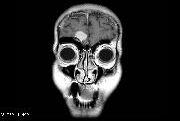Parkinson’s disease is diagnosed through a combination of medical history, physical examination, and neurological assessments. Here are some common steps involved in the diagnostic process:
- Medical history: The healthcare provider will begin by taking a detailed medical history, including information about the individual’s symptoms, medications, and medical conditions.
- Physical examination: A physical examination may be conducted to evaluate the individual’s coordination, balance, and muscle tone.
- Neurological assessment: A neurological assessment may be conducted to evaluate the individual’s reflexes, strength, coordination, and sensory abilities. The healthcare provider may also look for signs of tremors, rigidity, or bradykinesia (slowness of movement).
- DaTscan: A DaTscan is a type of imaging test that can be used to detect changes in dopamine levels in the brain. This test is often used to confirm a diagnosis of Parkinson’s disease.
- Laboratory tests: Laboratory tests, such as blood tests or cerebrospinal fluid analysis, may be conducted to rule out other possible causes of symptoms.
The diagnosis of Parkinson’s disease is typically made based on the individual’s symptoms, physical and neurological assessments, and imaging and laboratory tests. There is no single test that can definitively diagnose Parkinson’s disease, and the diagnosis is often made based on a combination of factors.
